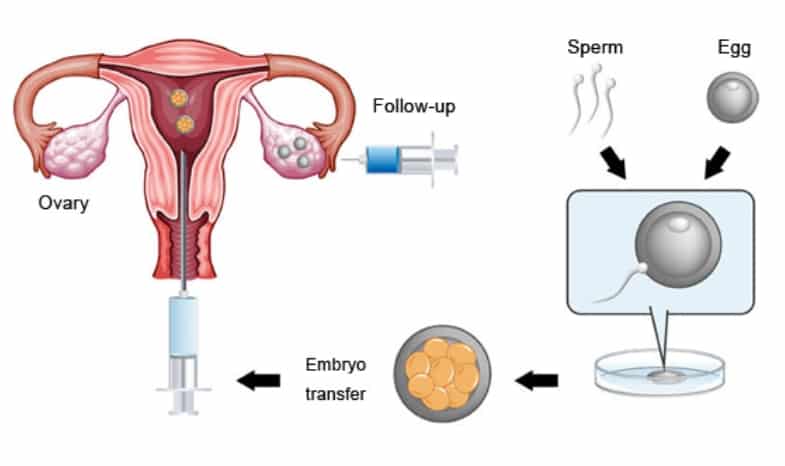Embryo Transfer

The embryo transfer procedure is the last one of the in vitro fertilization process. It is a critically important procedure. No matter how good the IVF laboratory culture environment is, the physician can ruin everything with a carelessly performed embryo transfer. The entire IVF cycle depends on delicate placement of the embryos at the proper location near the middle of the endometrial cavity – with minimal trauma and manipulation.
- The importance of proper embryo transfer technique for successful IVF cannot be overstated
- Ultrasound guided embryo transfer is the most efficient technique currently available
For IVF, the woman is stimulated with injectable medications to develop multiple eggs. Eggs develop in follicles in the ovaries. When the follicles are mature, the egg retrieval procedure removes eggs from the ovaries. Sperm is added to the eggs and the next day we check the eggs for evidence of fertilization.
The embryo transfer procedure seems very similar to a Pap smear for the woman. There should be no pain and no sedation or other drugs are required. We use a moderately full bladder for embryo transfer. This helps in 2 important ways. It allows good ultrasound visualization of the catheter which helps with smooth and proper transfer of the embryos to the best location, and it also unfolds the (anteverted, “tipped up”) uterus to a more accommodating angle,making the process smoother and less traumatic for the uterine lining and the embryos.
The embryo transfer catheter is loaded with the embryos and the physician passes it through the cervical opening up to the middle of the uterine cavity. Abdominal ultrasound is used simultaneously to watch the catheter tip advance to the proper location. It is sometimes difficult to keep the tip of the catheter in the exact plane of the ultrasound beam at all times – but it is very important to control the proper placement of the embryos .
When the catheter tip reaches the ideal location, the embryos are then “transferred” (squirted out of the catheter) to the lining of the uterine cavity (endometrial lining) by the infertility specialist physician. After the embryos are transferred, the catheter is slowly withdrawn and checked under a microscope for any retained embryos. If an embryo is retained in the catheter (uncommon) the transfer procedure is repeated immediately and the catheter is checked again.
